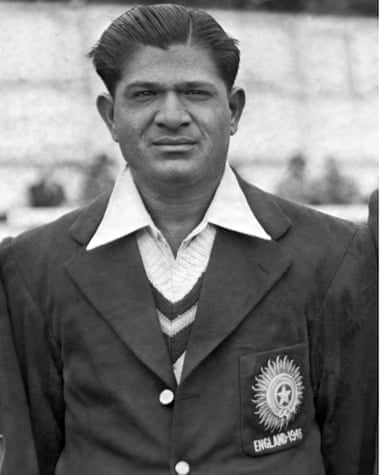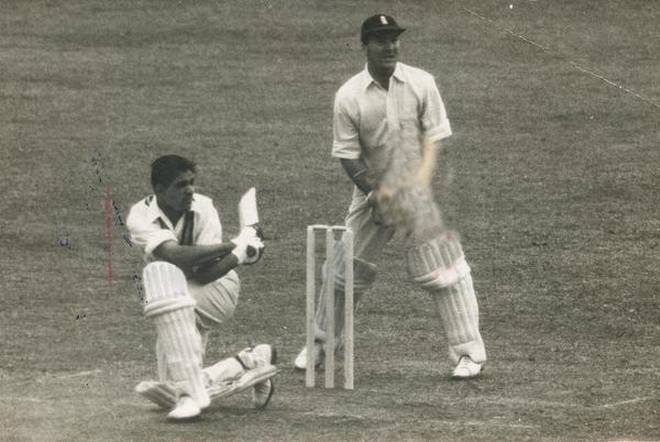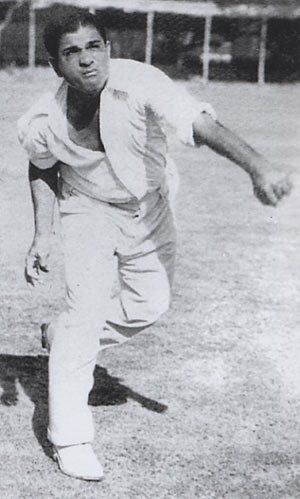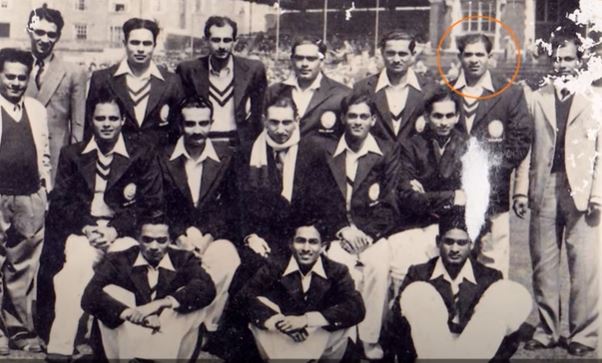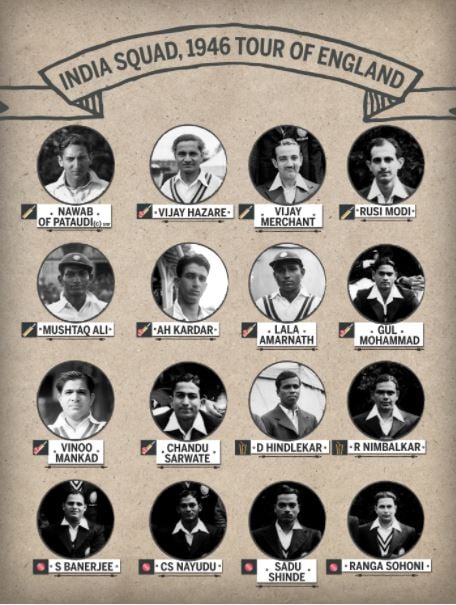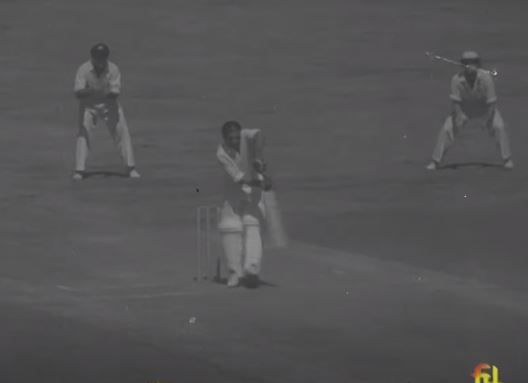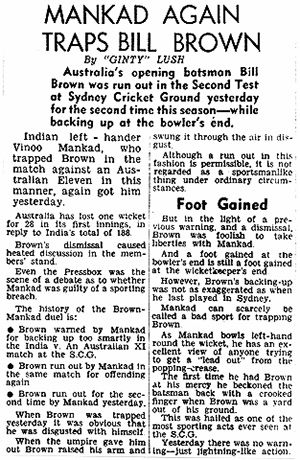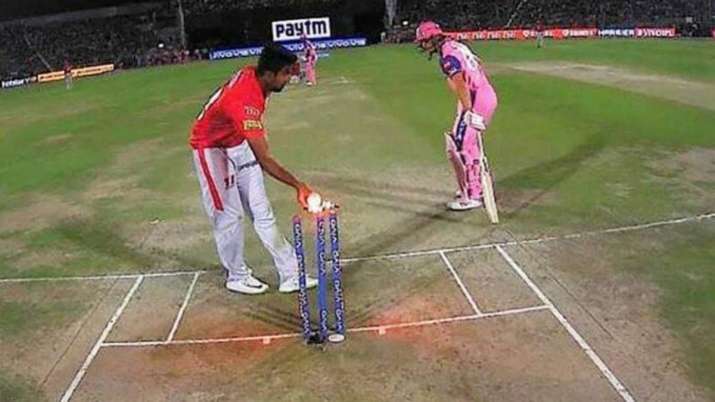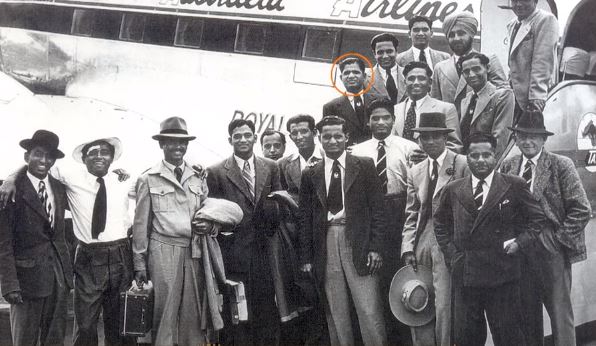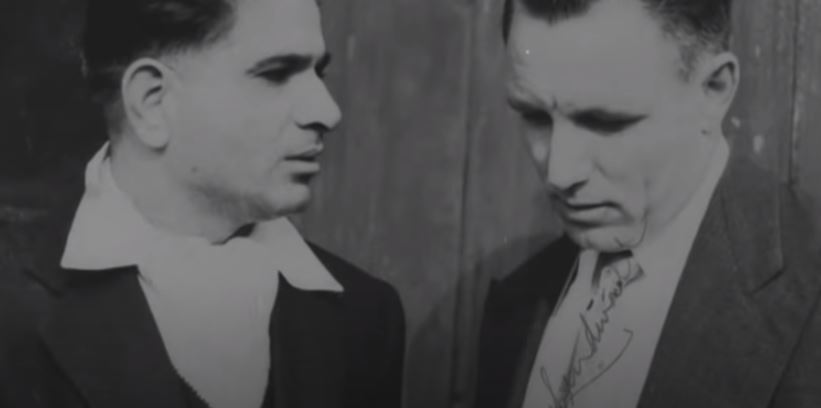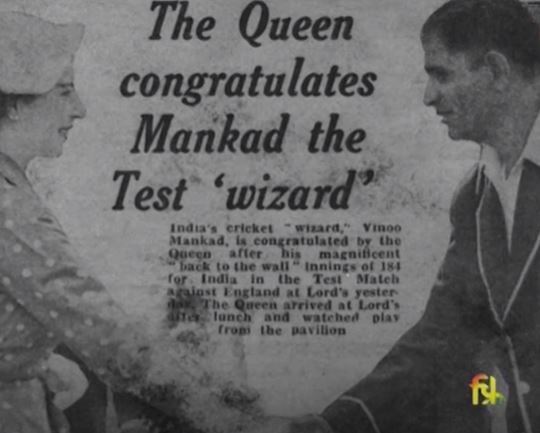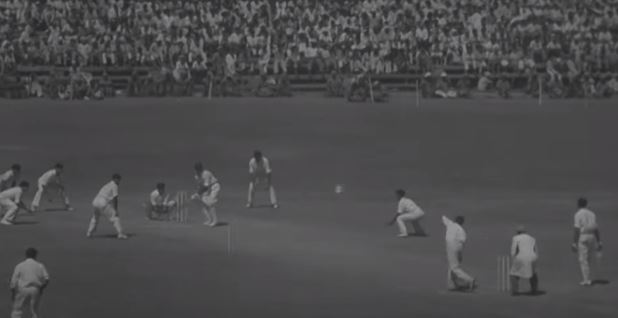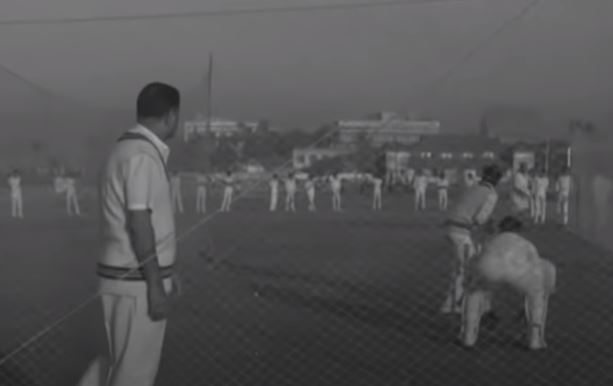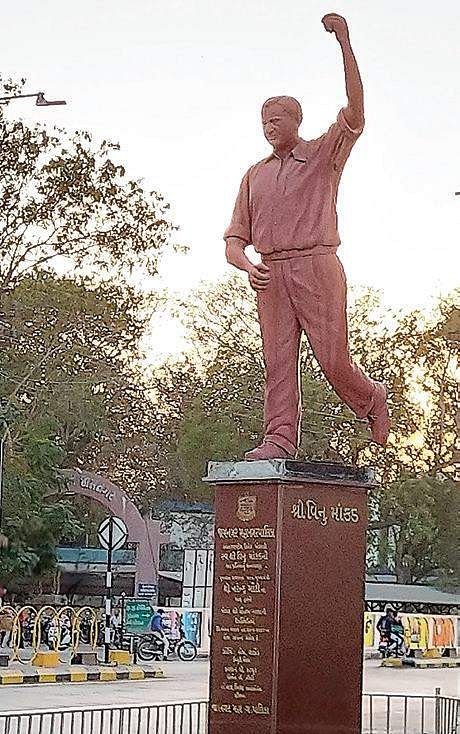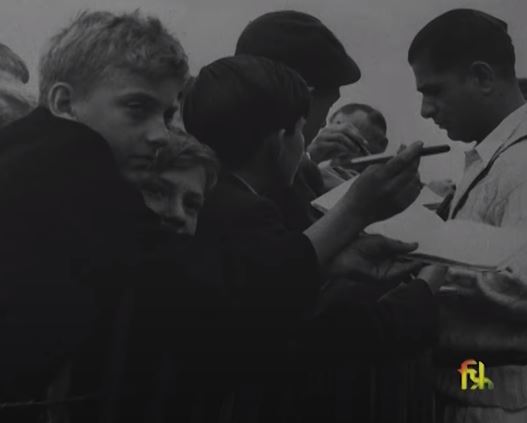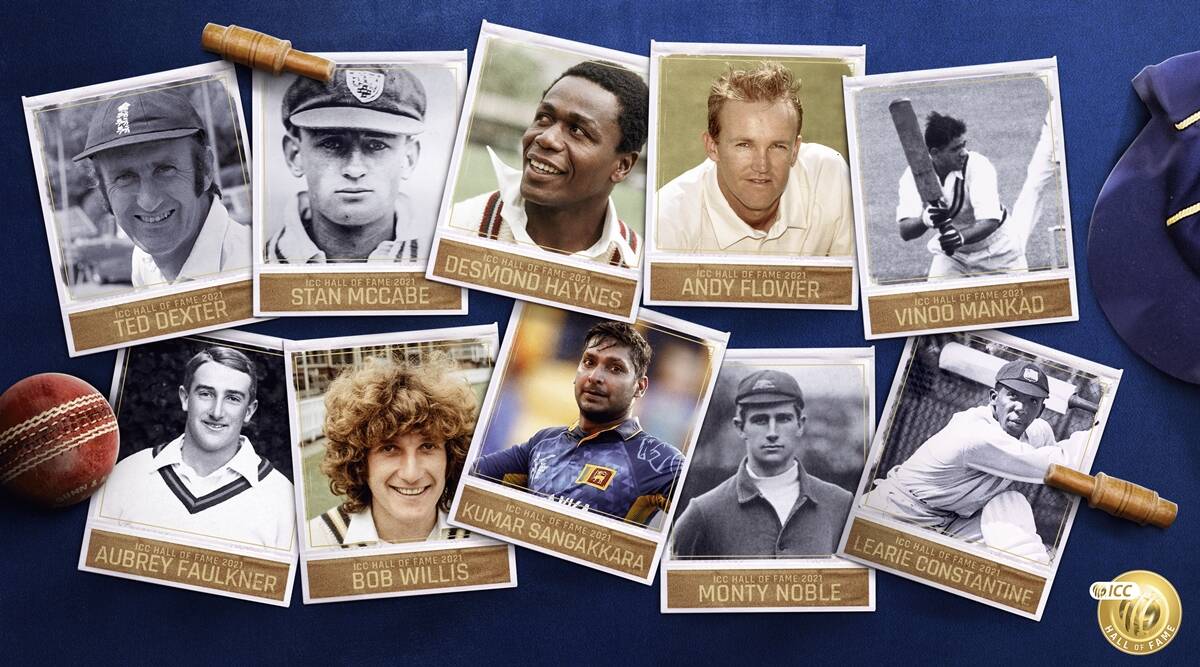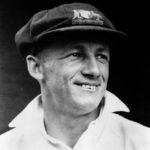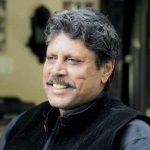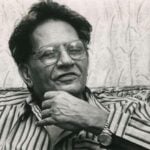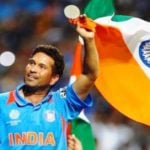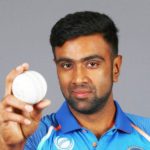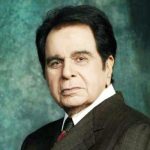Vinoo Mankad Age, Wife, Children, Family, Biography & More
| Bio/Wiki | |
|---|---|
| Real name/Full name | Mulvantrai Himmatlal Mankad [1]The Free Press Journal |
| Nickname(s) | Vinoo [2]Sportstar |
| Profession | Former Indian Cricketer (all-rounder) |
| Famous for | Dismissing a non-striker batter Australian Billy Brown run-out in 1946 by hitting the bails before bowling when the latter was outside the crease. This dismissal is commonly referred to as 'Mankading' named after him. |
| Cricket | |
| International Debut | Test- 22 June 1946 against England at Lord's Cricket Ground (London) ODI- N/A T20- N/A Note- There was no ODI and T20 at that time. |
| Last Match | Test- 6 February 1959 against West Indies at Feroz Shah Kotla Stadium (now Arun Jaitley Stadium) in New Delhi ODI- N/A T20- N/A Note- There was no ODI and T20 at that time. |
| Domestic/State Team(s) | • Western India (1935-1936) • Nawanagar (1936–1942) • Hindus (1936–1946) • Maharashtra (1943–1944) • Gujarat (1944–1951) • Bengal (1948–1949) • Saurashtra (1950–1951) • Bombay (1951–1956) • Rajasthan (1956–1962) |
| Nature On Field | Jolly |
| Coach/Mentor | • Albert Wensley as a Bowling coach • KS Duleepsinhji (nephew of the legendary batter Ranjitsinhji) as a batting coach |
| Batting Style | Right-handed bat |
| Bowling Style | Left-arm slow orthodox |
| Favourite Shot | Square Cut |
| Favourite Ball | Arm Ball |
| Records (main ones) | • Only cricketer under whom a test match was named. • First cricketer ever to score 100 runs and taken five wickets in a same test match. • One of only three non-England 'away' players whose names appear on both batting and bowling honours boards at Lords (The other two are Keith Miller and Sir Gary Sobers) • First Indian to score hundred and a duck in a same test match. • 2nd highest opening partnership in test cricket together with Pankaj Roy in 6 January 1956 against New Zealand at Madras Cricket Club Ground (now M. A. Chidambaram Stadium) in Chennai. • 2nd most wickets taken hit-wicket (3) after GD McKenzie from Australia. • 2nd most double hundreds in a test series after Sir Don Bradman. • First Indian to open the batting and bowling in a same test match against England on 12 January 1952 in Kanpur. • One of the only three cricketers to bat at every position in a match after Sydney Gregory (Australia) and Wilfred Rhodes (England). • 2nd fastest player to reach the Test double of 1,000 runs and 100 wickets after Ian Botham in 23 test matches.[3]The Times of India • First Indian to score 1000 test runs and take 100 test wickets. • One of only two cricketers to play for India after attaining the age of 40. The other name is Sachin Tendulkar. [4]Mint • First century scored by an Indian against Australia in 1948. • First cricketer to pick up 50 wickets or more in a single season in England's Bolton Cricket League. [5]Latestly • Only bowler against whom Sir Don Bradman got stumped in first-class cricket.[6]The Cricket Lounge • Only Indian batter to score two double hundreds in a single test series against New Zealand in 1952. [7]Sportstar • First Indian cricketer to endorse any commercial product (Brylcream).[8]The Times of India |
| Awards, Honours, Achievements | • Wisden’s Cricketers of the Year for 1947 • Honorary life membership of the MCC in 1967 • Padma Bhushan by the Government of India in 1973 |
| Personal Life | |
| Date of Birth | 12 April 1917 (Thursday) |
| Age (at the time of death) | 61 Years |
| Birthplace | Jamnagar in the erstwhile princely state of Nawangar (present-day Gujarat) |
| Date of Death | 21 August 1978 |
| Place of Death | Bombay (now Mumbai), Maharashtra, India |
| Death Cause | Natural |
| Zodiac sign | Capricorn |
| Signature |  |
| Nationality | Indian |
| School | Nawanagar High School (present-day Gujarat) |
| Educational Qualifications | Matriculation [9]Sportstar |
| Caste | Brahmin |
| Address | Marine Drive, Mumbai |
| Controversy | Salary Dispute- In 1950s era, test players weren't paid well. Mankad who also played for Lancashire League demanded the cricket admininistration to pay extra money to compensate for his league earnings when he was picked in the team to tour England in 1952. As a result, furious cricket board sacked him from the ongoing tour. However, the cricket board then bought him back in the side after the disastrous performance by the team in the first test. |
| Relationships & More | |
| Marital Status | Married |
| Marriage Date | 1945 |
| Family | |
| Wife/Spouse | Manorama Vachharajani (first wife)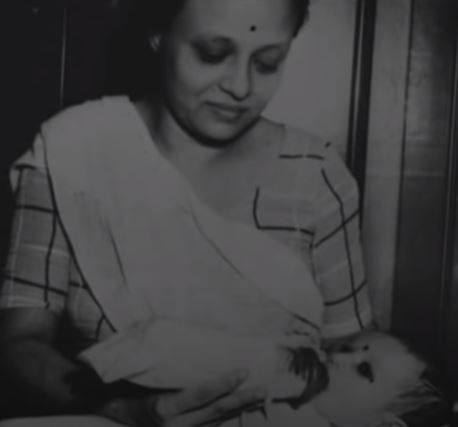 Saraswati Mankad (second wife) |
| Children | Son- 3 • Ashok Mankad (Test cricketer:he died in 2008 at Sportsfield apartments in Mumbai during sleep) 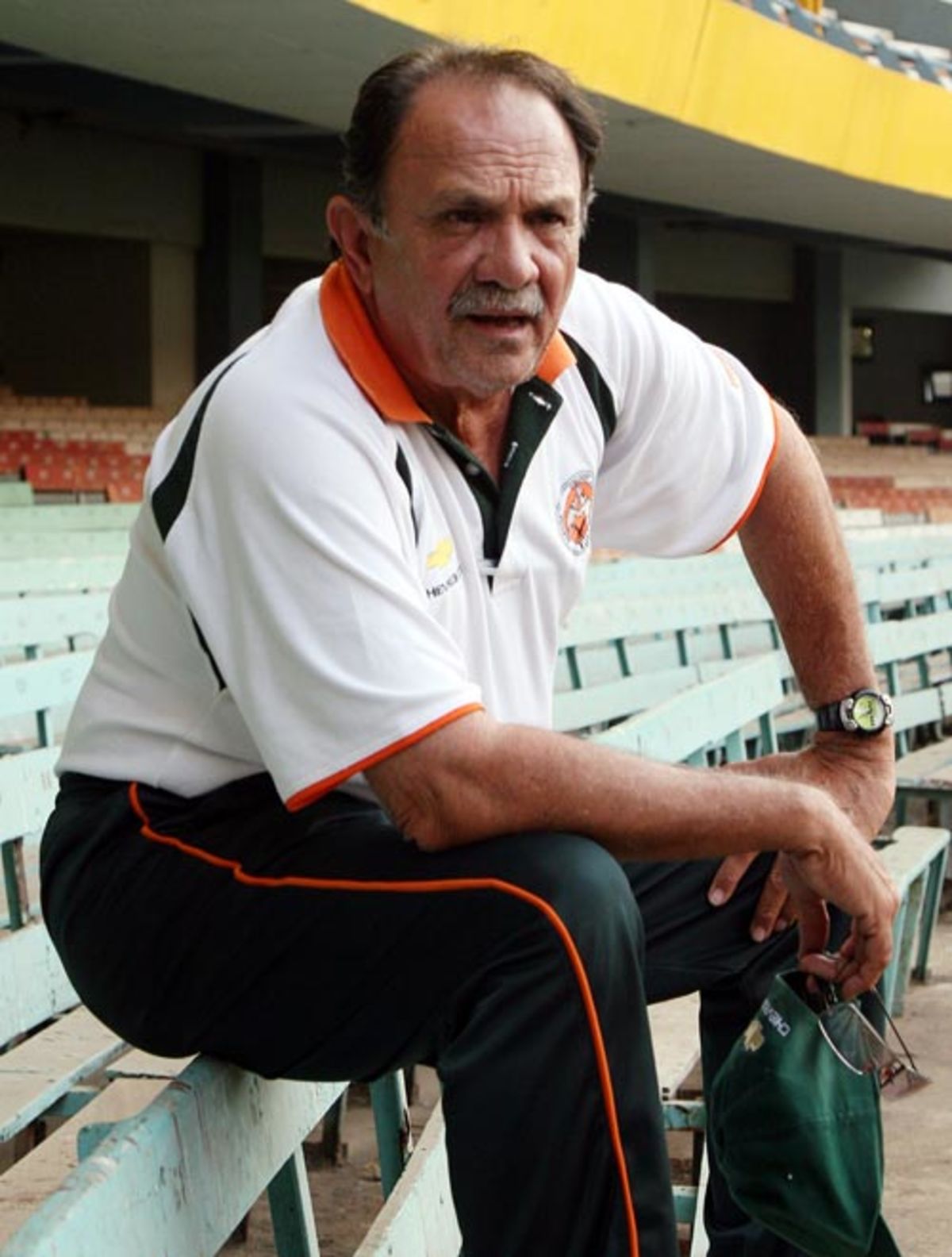 • Atul Mankad (First-class cricketer:he died in 2011 in Mumbai after a brief illness) 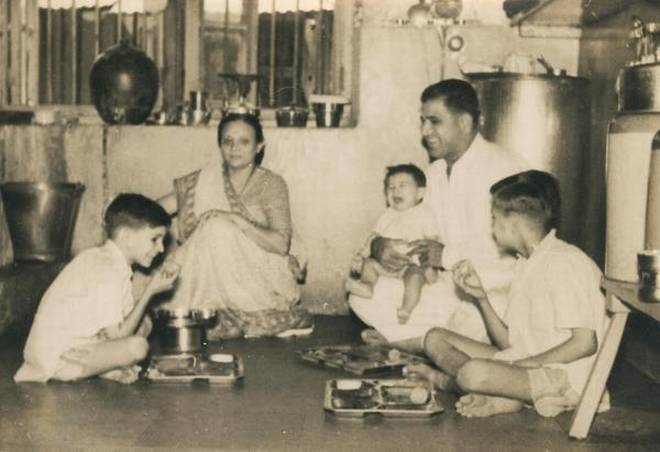 • Rahul Mankad (First-class cricketer)  |
| Brother-in-Law | George Vasant (former Indian Tennis player) |
| Grandchildren | Mihir Mankad (ex-tennis player, award winning professor and elder son of Late Ashok Mankad)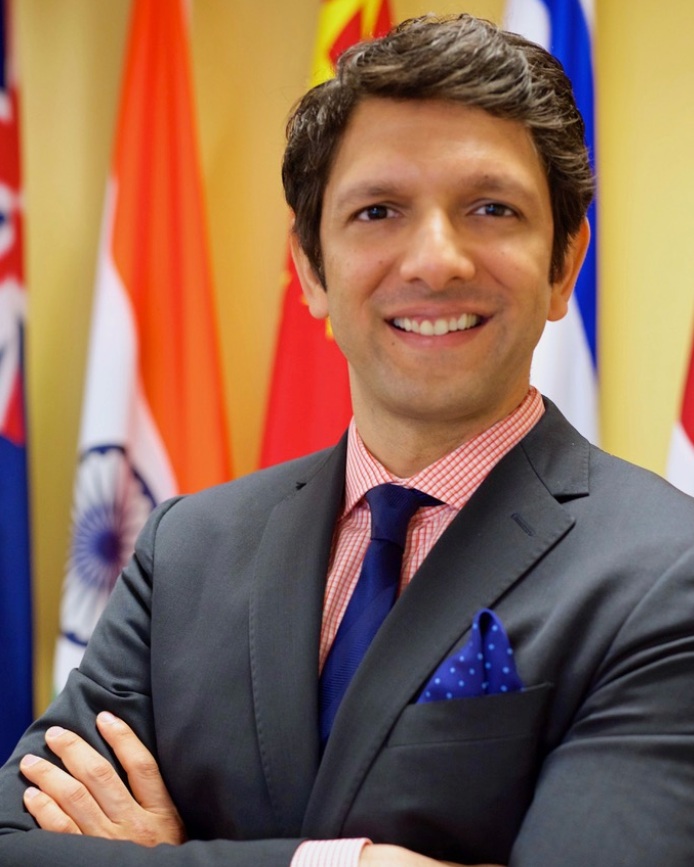 Harsh Mankad (Indian Tennis player and a younger son of Late Ashok Mankad) 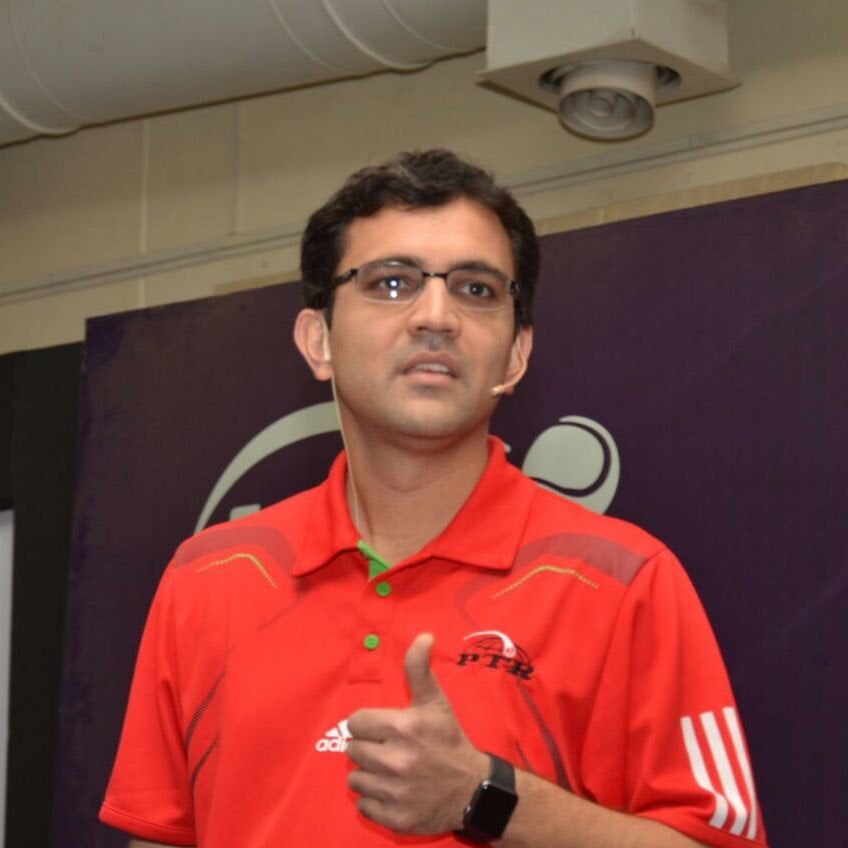 |
| Daughter-in-Law | Nirupama Mankad (former Indian tennis player and a wife of Late Ashok Mankad)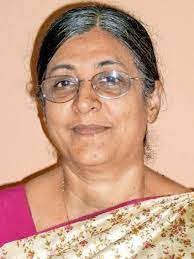 |
| Favourites | |
| Cricketer | Batter- Sir Don Bradman (Australia), Dennis Compton (England) ,and Sir Len Hutton (England) Bowler- Ray Lindwall (Australia) and Keith Miller (Australia) |
| Actor | Dilip Kumar |
Some Lesser Known Facts About Vinoo Mankad
- Vinoo Mankad was an International cricketer who played for India from 1946 to 1959. He is widely regarded as the first great all-rounder before Kapil Dev, India has ever produced and the first professional cricketer to play for India. He was primarily a hardheaded batter who played according to the situation and can adjust his tactics to the state of the match. In terms of bowling, he was the conventional round-arm bowler who was renowned for mixing his leg-break with a pace. He also had wide variations in his armory to figure out batter in the first few deliveries to plan a strategy against him.
He started playing cricket during his school days. The Jamsaheb of Nawanagar, an ardent cricket lover, saw his talent and in 1932, he went to England to practice the sport. At that time, he uses to bowl off-break that disturbed his natural grip and action for deadly bowling. This flaw was caught by a Sussex Professional Albert Wensley who advised him to go for a leg-break. Albert Wensley was the one who took the charge of his cricket education. He then taught him the art of flight and mixing pace with spin. Mankad recalled that time by saying that [10]Sportstar
“Wensley came to me and said that I will not go anywhere as a medium-pacer. My bowling was okay on matting surfaces but Wensley felt that on turf I would be innocuous. Moreover, Nawanagar needed a left-arm slow bowler.”
He further revealed
“If there was anybody who had immense faith in me it was the Jamsaheb. I remember how he tried to get me into the Lahore ‘Test’ against Lord Tennyson’s team. He failed because the other selectors said I was too young. But when I played at Bombay, the Jamsaheb resigned from the Committee. He did not want to be involved in selection when I was concerned because charges of favoritism may be leveled at him.”
- In his book ‘History of Indian Cricket’ Edward Docker (Australian cricket author) wrote [11]The Times of India
“He would rise early each morning, to train, to walk, to run, hop on his haunches, to bicycle, to bat, to bowl. He was like some Indian son of the soil, his nose ever close behind the plow, his nostrils so full of the scent of the earth that his life requires no other nourishment. Mankad didn’t play any other games. He went to bed early. He gave every day to developing his talents. As the farmer is tied to his plot, Mankad was tied to the cricket pitch. As the farmer knows every lump of soil on his land, he would come to know every crack, every wrinkle, every bump and blade of grass on the cricket pitches of India. Like a true professional, he played wherever he was valued: Bengal, Rajasthan, Maharashtra, among others.”
- He rose to fame with his all-round performance in the finals of the High School Shield where he took 13 wickets and was the highest run-scorer in that match against Alfred High School, Rajkot. He scored 35 and 92 not out in both innings and took his side to a win from the jaws of defeat.
- One old cricket scribe wrote about him that
“During the war years, while playing for Western India, Nawanagar, Hindus, and Maharashtra, one could see the dedication of the young lad. So, his approach in domestic cricket never smacked of frivolity. To him, every match was important.”
- He gained the limelight during an unofficial test match played between Lord Tennyson’s team and India in 1937 at the age of 20. Lord Tennyson was the British first-class cricketer who captained Hampshire and the England Cricket team. He had the best batting and bowling averages in that match (62.66 and 14.53) which prompt Lord Tennyson to pose his opinion that
“Mankad would step into the World’s Best XI.”
- His cricket progress made a huge setback during World War II. The period 1939 to 1945 was spent while sitting at home. He then played for the Western States team against the touring Australian side. He was dismissed in both innings for just 8 and 4 runs by medium-pacer Ron Oxenham. He didn’t get the chance to bowl either. In December, he played his first Ranji Trophy match when he was unable to take even a single wicket. But finally, the table has turned next year when he scored 185 runs against the Bengal team sealing a victory for his side. Next year, he played for Nawangar Cricket Association in a Ranji Trophy and took his team to a trophy.
- He then left that team and joined the Gujarat team resulting in his less chance for selection into the national side. But his performance against the Ceylon team when he was picked as the secondary option for the Indian team and against the Australian Services XI fetched him an Indian test cricketer’s jersey for the England tour in 1946. Against Ceylon, he took eight wickets and bowled superbly against the Australian Services XI. His performance in that match impressed A. L. Hassett (Australian Services XI captain) so much that he tipped him as a certainty to do well on the English trip.
- He scored 63 runs in the second inning of his debut match after staying for 85 minutes. This inning includes seven fours and one six. This score came after he bowled 48 overs in the first inning on the same day. He also took two wickets in that match but unfortunately, couldn’t prevent his side from a defeat. This team was led by Mansoor Ali Khan Pataudi. He missed two matches during that tour. While fielding at the cover-point against Surrey at the Oval, the ball hit his left ankle as a result, he was unable to bowl the faster deliveries which affected his performance in that match. This match also shouldered dual responsibility on him- both batter and a bowler.
- However, the Indian management tried to settle this issue by bringing him further down the order at Old Trafford during the second test. He played at number three in the preceding test. This improved his performance in the bowling department when he took five wickets after bowling 48 overs. And although, he could only score 0 and 5 runs but somehow managed a draw. In one of the articles in Wisden magazine about the 1947 Cricketer of the Year, it was written that
“Mankad, of slightly round-arm action, takes only a few steps before delivery near the extreme edge of the crease. He imparts an unusual amount of spin to his stock ball, the leg-break to a right-hand batter. His batting varies from the stolid to the adventurous according to the situation and his place in the order. This example of team spirit has characterized his constant approach to the game.”
- During the 1947-1948 tour of Australia, in the second test match at Sydney, Australia having batting first, lost their first wicket of Bill Brown in an unusual fashion. Mankad while running into the bowl saw Brown at the non-striking end backing up too far from the crease. After reaching the bowling wicket, he hit the bowl to the stumps, and Brown was declared run-out. However, Mankad warned him three times before for going too far from the crease. This unconventional way of run-out led to an uproar in an Australian media who coined this as ‘Mankading’. He was supported by then Australian captain Don Bradman who in his autobiography ‘Farewell to Cricket’ wrote that [12]Deccan Chronicle
“For the life of me I cannot understand why the laws of cricket make it quite clear that the non-striker must keep within his ground until the ball has been delivered. If not, why is the provision there which enables the bowler to run him out?”
- Over the years, several cricketers have suggested ruling out this unspirited way of running out from the cricket’s lexicon. However, his son Rahul Mankad said that it is unfair that his father’s name is dragged every time such run-outs occur. He further added,
“It is not as if my father was the first person to run out a non-striker, and nor is he the last.”Many other Indian cricketers like Sunil Gavaskar and Nari Contractor backed his statement by saying that Mankad is India’s all-time great cricketer. His name should not be spoiled.”
Mankad was quoted by International Cricket Council (ICC) by saying that [13]Deccan Chronicle
“Marylebone Cricket Club’s (MCC) law 41.16 deals with the issue of a non-striker leaving his/her ground early. The law states that if the non-striker is out of his/her ground from the moment the ball comes into play to the instant when the bowler would normally have been expected to release the ball, the bowler is permitted to run him/her out. Whether the attempt is successful or not, the ball shall not count as one in the over. If the bowler fails in an attempt to run out the non-striker, the umpire shall call and signal dead ball as soon as possible.”
- Even India’s wicketkeeper-batter Dinesh Karthik found it extremely unfair that the legendary Mankad’s name is used in an unusual way for the way of dismissal which is absolutely legal. [14]Outlook He further stated that,
“There are two issues I have with this ‘Mankad’ run out. First is the implementation of it. Second is the name ‘Mankad’ run out. All the way from Don Bradman to Sunil Gavaskar, everyone has said it’s completely within the rules. The ICC and MCC have also taken a stand that it is okay. So I don’t see the reason why bowlers or any team that does it is looked at in a negative way. The person who did it the first time was Vinoo Mankad. Interestingly, he was alert enough to do that dismissal. But more importantly, nobody remembers the batter who got run out. It was Bill Brown.”He further added,”If Mankad was the first person who did that runout, Bill Brown was the first person who got run out for being silly and walking out of the crease. Why is it that people remember Mankad and not Brown? Why can’t it be called anything to do with Bill Brown? He (Mankad) followed the rules and did it. The ICC and MCC call it a run-out. So the name Mankad shouldn’t be used in a negative connotation.”
Interestingly, this same incident happened in 2019 during an IPL match between Kings XI Punjab and Rajasthan Royals when Rajasthan’s Jos Buttler was Mankaded by Ravichandran Ashwin after has too far from the bowling crease.
- His first century came on 1 January 1948 during the third test in Melbourne against the Bradman-led Australian side. Australia having won the toss; batted first and put on 394 runs on the board. Vinoo Mankad scalped four Australian victims with the most economical spells of 2.73. He then opened the batting and scored 116 runs off 187 balls taking the score to 291 runs on the third day. However, in reply to the target of 359 runs, the Indian got all out for 125 runs and lost the match. Opposition captain Don Bradman came to see him at the airport and handed an envelope to Mankad containing his signed photograph with the remark “Well Bowled Vinoo”. Mankad values it among the highest tribute ever paid to him for his brilliance in cricket.
- His second century came in the same series during a fifth test match against the same side. Unfortunately, India lost the game by an inning and 177 runs. Mankad was the lone centurion for India with 111 runs in the first inning. He also had two important wickets of Neil Harvey and Ray Lindwall in that match.
- In 1952 against England at Lord’s Cricket Ground (London), he came with a match-winning performance by scoring 72 runs while opening the innings and took the score to 235 runs. This inning also includes his six over the sightscreen off the bowling of Roly Jenkins. He then led the charge as a frontline bowler by claiming five wickets for 196 runs after bowling 73 overs. When the second inning commenced, he scored whopping 184 runs against the lights of Alec Bedser and Fred Trueman. He followed it up with an economical bowling spell of 1.4 runs per over in the second inning. This match is also referred to as the ‘Mankad Test’. Interestingly, he wasn’t picked up in the touring side initially as he was playing in the Lancashire League during that season. India got thrashed to 0 for 4 wickets when the team manager Pankaj Gupta convinced the BCCI and Mankad’s club to release him to play for the national side. The Wisden in its obituary wrote about this performance following Mankad death in 1978 that
“England won by eight wickets, but Mankad’s performance must surely rank as the greatest ever done in a Test by a member of the losing side.”
Also, Times (London) described his performance as something to remember for a very long time. His fellow cricketer the legendary Vijay Hazare wrote in his autobiography ‘Cricket replayed’ that
“I was lucky to be batting at the other end when he made those glorious 184 runs and could watch them in all their magnificence. No bowler could peg him down. (Alec) Bedser, (Jim) Laker and company, not to mention (Roly) Jenkins, held no terror for him and met with some rough treatment at his hands.”
- On 1 January 1955, he was made the captain for Pakistan’s tour due to the omission of Polly Umrigar from the captaincy. He was 41 years old at that time. This match was held in Dhaka (now in Bangladesh following Bangladesh Liberation War in 1971) and is the first official test match ever held in Pakistan. The match ends up in a draw. Likewise, all the remaining four test matches of the series were also drawn. On 21 January 1959, he was again made the captain for the fourth test match against Windies at home which ended on a losing side. This was the last match for him as a captain. Out of six test matches as a captain, he scored 55 runs with the highest score of 33.
- On 2 December 1955, he came up with the first double hundred of his career against New Zealand in Mumbai. India batted and scored 421 for 8 declared with Mankad contributing with 223 runs. On the other hand, New Zealand could only manage 258 and 136 runs in both innings and losing the match by an inning and 27 runs. Mankad also took four wickets that included the wicket of their captain Harry Cave. In this match, he completed his 2000 test runs.
- In the fifth test match against the same opponent at Corporation Stadium (now Jawaharlal Nehru Stadium) in Chennai, Mankad chipped in with another double hundred of 231 runs (his highest test score) in the first inning. India went on to win this match by an inning and 109 runs margin. This match is also remembered for the highest opening batting partnership between Mankad and Pankaj Roy of 413 runs until it was broken by South African Neil Mckenzie and Graeme Smith (415 runs) in 2008. His score of 231 runs was also the highest Indian test score at that time. Sunil Gavaskar surpassed this record in 1983.
- His form dipped after that and he could only score 107 runs in nine test innings he played against Australia and West Indies and took 15 wickets. In his last inning, he was bowled by Collie Smith on zero. He retired from all forms of cricket in 1962 after taking his Rajasthan team to a Ranji Trophy final.
- His significant contribution to Indian cricket was his disciples named Vijay Manjrekar, Salim Durani, Eknath Solkar, Sunil Gavaskar, and many more.
- He died in 1978, the year Kapil Dev made his debut in international cricket. He was ailing for two years. The doctor has to decide between amputating his left foot or doing a femoral artery graft. The doctor then decided to go for a second option. During his last stage, Subhash Gupte his fellow cricketer visited him. He recalled that moment by saying that he was wondering that whether Mankad will recognize him or not. Then he asked gently [15]Scoreline.org
“Do you know who I am?”
In response, Mankad could not say a word. In fact, he raised his right hand.
“The non-existent ball was clutched in the grip of a leg-spinner.”
Gupte smiled.
- Vijay Hazare told about him that [16]The Times of India
“His immaculate length and perfect control, combined with his tantalizing spin and subtle variation of pace” were Mankad’s principal assets. “Endowed with a fine physique, he could bowl for hours without tiring and, what is more important, could stand up to punishment without losing either accuracy or heart.”
- A road is named in honor of Vinoo Mankad. It is situated just south of the Wankhede Cricket Stadium in Mumbai. Also, a statue was constructed in his birthplace Jamnagar, Gujarat.
- Every year, a national tournament is organized by the Board of Cricket Control of India (BCCI) named Vinoo Mankad Trophy. It is the junior version of the Ranji Trophy played at the under-19 level where 35 teams compete.
- In 44 test matches, he scored 2109 runs with an average of 31.47 which included five centuries and six fifties. He also took 162 wickets with a bowling average of 32.32 and career economy of 2.13. His favorite team was England against whom he scored 618 runs and took 54 wickets followed by New Zealand and West Indies. He was most successful in Asian sub-continents with 3132 runs and 115 wickets. He played under six test captains that include Lala Amarnath, Vijay Hazare, and Iftikhar Ali Khan Pataudi (father of Mansur Ali Khan Pataudi).
- Though he has played in all eleven positions in test cricket but he was most successful as an opening batter playing at the number one slot where he scored 1315 runs with an average of 39.84. Interestingly, four out of his seven ducks in his whole career are at this position. Apart from India, he scored most of his runs in West Indies. In terms of bowling, he has taken most of his wickets in England (apart from India). He once opened the bowling in the second inning against England in 1952 and managed to take one wicket. However, his economy was six runs per over in that inning.
- On 13 June 2021, he was inducted into the ICC Hall of Fame along with ten other cricketers ahead of World Test Championship Final between India and New Zealand on 18 June. The inductees are Aubrey Faulkner of South Africa and Monty Noble of Australia for the early era (pre-1918), Sir Learie Constantine of West Indies and Stan McCabe of Australia for the inter-war Era (1918-1945), Ted Dexter of England, and Vinoo Mankad of India for the post-war Era (1946-1970). Desmond Haynes of the West Indies and Bob Willis of England were inducted from the ODI era (1971-1995) while Andy Flower of Zimbabwe and Kumar Sangakkara of Sri Lanka were from the modern era (1996-2016).
- On his induction, his student and the legendary Indian batter Sunil Gavaskar said
“Vinoo Mankad’s legacy has been to tell the aspiring Indian cricketer to believe in oneself. He was a great proponent of self-belief. He was the one who kept saying to me that you need to keep scoring runs and keep at it. When you get a 100, let that be the knock on the selector’s door. If it is unheard, then score that double hundred and let that knock be even louder. You can have the best technique, but if you do not have the temperament to support it you will not succeed, you have to keep hanging in there and have that self-belief. That was the greatest lesson I learned from him.”
- A cricket author and former first-class cricketer in the 1960s and 70s, V.J. Raghunath wrote an article that says
“In an age when our close-in fielding support was mediocre and out-fielding patchy with few athletic movers, Mankad took 162 wickets with an economy rate of 2.1, bowling against Bradman, Len Hutton, the 3W’s, Sobers, Rohan Kanhai of West Indies, and other great batter of that era. He fielded with extraordinary anticipation of his bowling to pouch quite a few ‘caught and bowled’ victims.”
- In his book “Legendary Indian Cricketers”, famous commentator Ravi Chaturvedi wrote [17]The News Minute
“Hair parted in the middle, shirt buttons open to the midriff, light-skinned, his green eyes enhanced by ‘kajal’ (eye-liner), he was pleasant to befriend but very unpleasant with the ball, and when he replaced the ball with the bat he was equally good. He could chip, chop, cut, drive, hook, punch, sweep, and smote any ball to any part of the field. However, he got most of his runs through square cuts and placements to leg.”
References/Sources:

